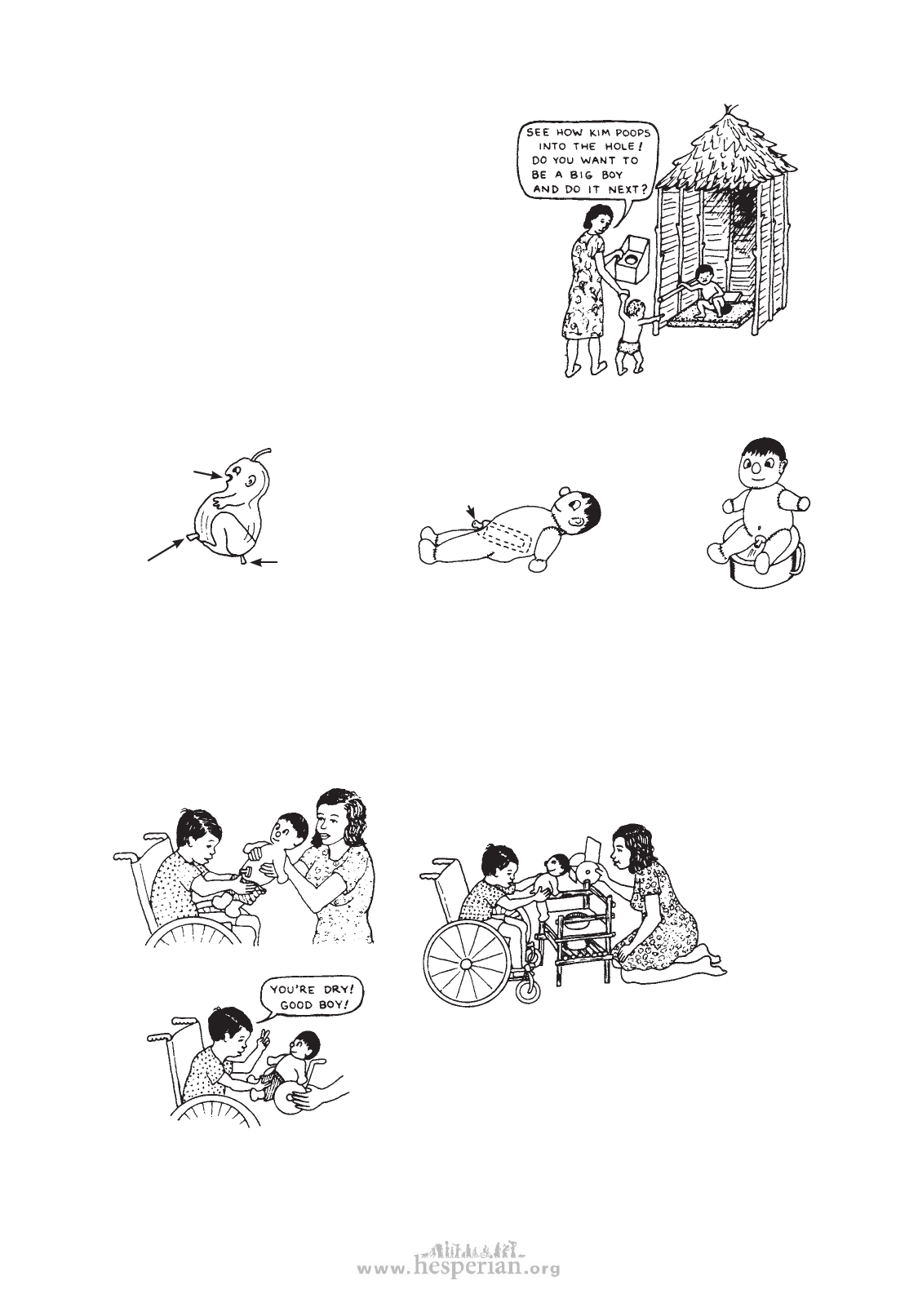
5. Use models, examples, and demonstrations
Setting an example is one of the best
ways of teaching—especially if the example
is set by persons the child loves, admires,
and tries to copy. Even before children are
old enough to be toilet trained, help prepare
them by letting them watch their brothers and
sisters use the pot or latrine. Tell them that
when they are big enough they will be able
to do it that way too.
Using a doll that wets is another good
way to introduce toilet training. Dolls that
‘wet’ can be bought, or you can make one out of,
a gourd
open mouth
(put water
in here)
or a baby bottle inside
a homemade rag doll.
large hole
in nipple
of bottle
TOILET TRAINING 341
when sitting
up, doll pees
plug (pull
to pee)
plug (pull
to poop)
when lying
down, no pee
Show the child how the doll pees in the pot. Or better, ask your child to help you
toilet train the doll. Be sure to include each step that will be needed for the child to
become as self-reliant as possible. For example:
First have the child show the doll
how to get to the latrine or pot—
and then help the doll lower his
pants.
Next have the child teach the doll how to get
onto the pot, and sit there until he pees. Try
to make the situation as nearly like that of
the child as you can—using the same pot in
the same place that he will use it.
Turn it into
a game, but
keep the
focus always
on toilet
training.
After the doll has finished peeing, have the child
pull up the doll’s pants. Ask him to feel the doll’s
pants and check whether they are dry. If so, have
him praise the doll.
To repeatedly see real persons (not just dolls) enjoy and be rewarded for using
the pot or toilet is especially important for a child who is mentally slow or who has
language difficulty.
disabled village children